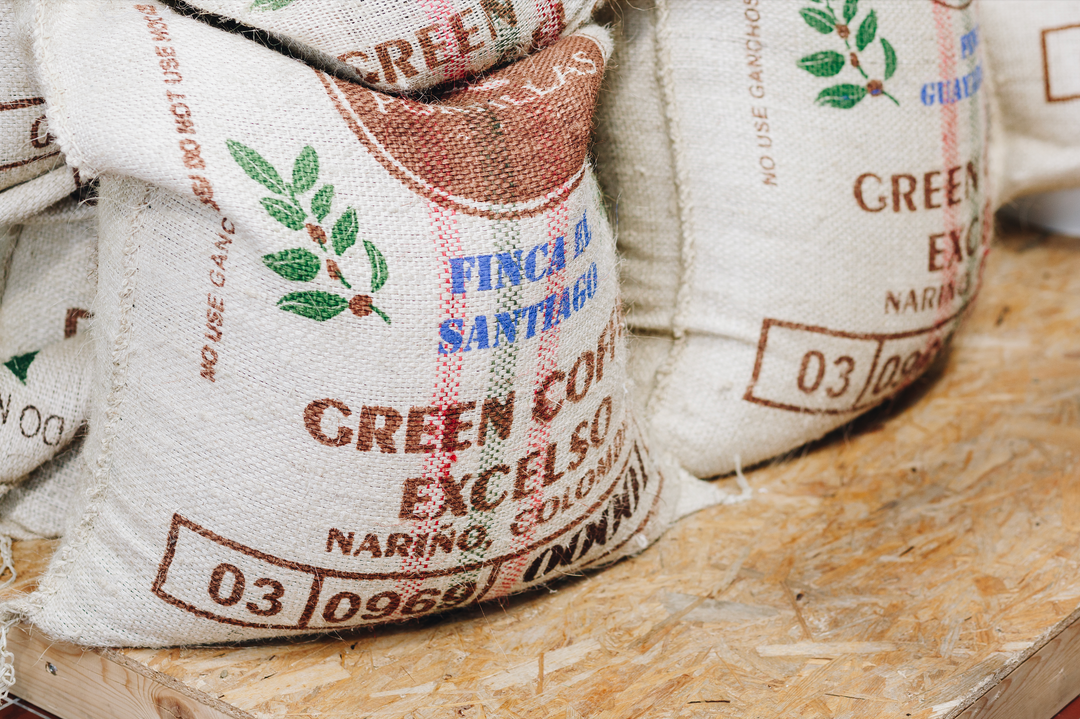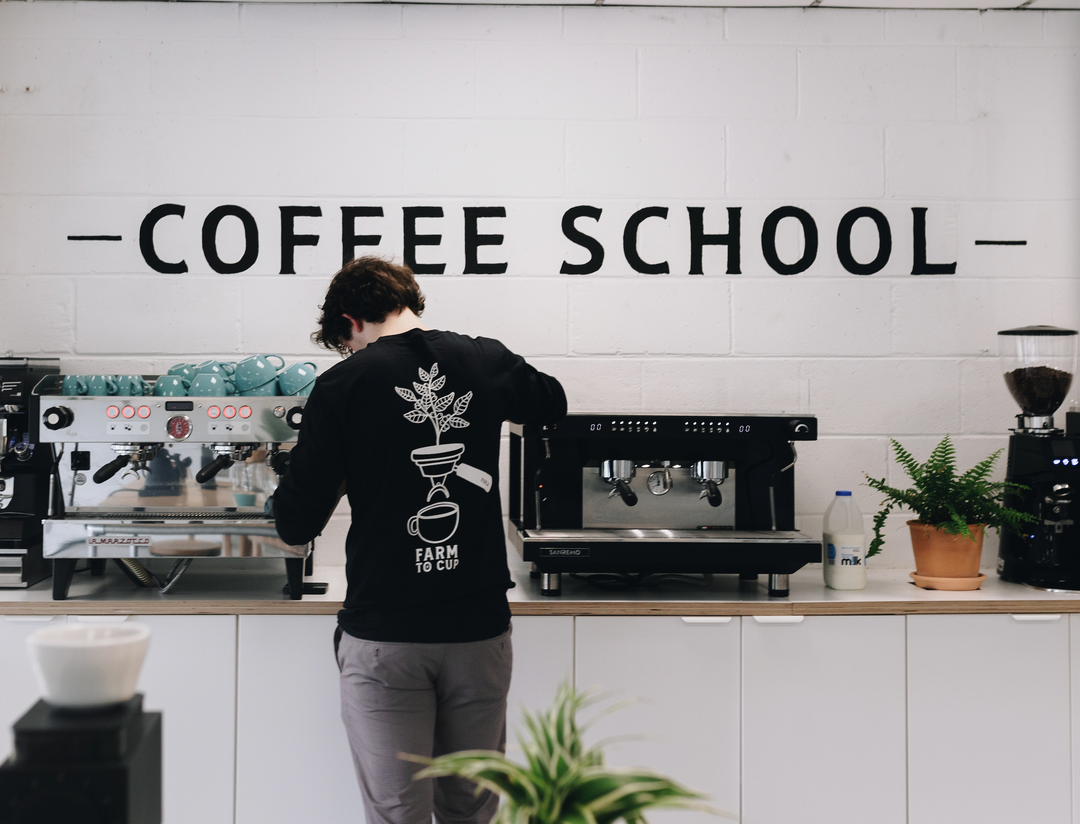What Does It All Mean? Understanding the label on a bag of coffee
Picking up a bag of speciality coffee is a little different from commercial coffee. Traditionally all the information you find on a bag would be limited to the brand name and logo, a name for the coffee, and a number indicating strength. And whilst we have grown used to this, it actually tells very little about what you are going to find inside the bag.
The name for the coffee is usually a generic name more fitting to a time of day than details about the coffee – ‘Early Mornings’, ‘Evening Roast’ etc. – whilst it makes the bag easily identifiable there is no real useful information here.
Similarly, the number indicating strength doesn’t tell us much. A number 3 on one bag of coffee may not be the same as a number 3 on another bag of coffee. There is no real consistent indication of the roast of the coffee, and as we will explore later on, a coffee roast profile is hugely important and can’t be categorised by numbers.
What will you find on a label of Speciality Coffee?
Across the speciality coffee market, you tend to find similar headings of information on the bags of coffee. On Fidela Coffee bags, you will find information telling you; the name of the farm, the processing method, tasting notes, the origin and region of the farm, growing altitude, variety, and if it is part of our nano lot series there will be some additional information provided about the processing.
But why is this all important? And what should you really be looking out for when you’re buying a bag of coffee?

The Farm Name
A way of easily identifying a coffee, it’s the name of the farm at origin where the coffee is grown. This helps indicate that the coffee you are buying is from a single farm or is a small lot from within that farm. This helps in the coffee’s traceability as it links the beans to a single location and farmer which has been selected by us for the high-quality of the crop.
It’s sometimes easy to forget about the hard work involved in growing coffee, and behind every bag there have been hands hard at work. By identifying the farm name, and the family behind the coffee there is recognition given. By removing this information, we would be removing their ownership of the crop.
Processing Method
A coffee bean begins life as a cherry, it’s a red fleshy fruit (the outer layer is the skin, the fleshy inside is called ‘mucilage’) and inside are two green seeds – these are our coffee bean! But before they are exported from origin, the skin and mucilage must be removed.
Every coffee bean goes through stages of drying to remove excess moisture, fermentation time, and depending on the processing method it will either be ‘depulped’ where just the skin is removed, and the mucilage is removed through soaking and washing, or it will be hulled where the full cherry is dried in the sun and the skin and mucilage are removed afterwards.
Washed Coffee – in this process the cherry is fully removed from the coffee seed before drying. It leads to a clean and transparent cup with sparkling acidity and delicate florals.
Natural Coffee - in this process the full cherry remains on the coffee seed whilst it dries. The fermentation that occurs in this process pushes natural sugars into the coffee seed leading to a sweeter cup, with boozy notes. Natural coffees tend to have more pronounced flavours.
Semi-Washed/Honey Coffee – As the name suggests, this process involves a partial removal of the cherry before drying. This means you get a mix of both flavour profiles. Semi-Washed/Honey coffees therefore have the sweet and pronounced notes of a natural coffee, whilst maintaining the clean, floral notes from washed coffees.
When choosing your bag of coffee, keep an eye out for the processing method used with the coffee. The processing methods have one of the biggest influences in the cup flavour profile, so finding a processing method you prefer is important.
Tasting Notes

Just like wine, coffees also have flavour descriptions that you will be able to distinguish when drinking a cup. As a result of meticulous growing and processing methods at farm level, as well as skilled roasting techniques, speciality coffee can be roasted to a lighter roast profile allowing you to taste the natural flavours of coffee.
Traditionally, commercial coffees are cheaper lots which aren’t grown, processed, or roasted with as much care and attention. By roasting the coffee darker it mask the flavours of poorly grown coffee. That’s why you may find even the lower "strength numbers" on commercial coffees are still dark and ashy.
We recommend finding tasting notes that you enjoy the most in coffees, so you can select coffee that suits your taste preferences. Some people enjoy coffees that taste like chocolate, caramel and nuts, others enjoy more fruity coffees that have notes of blackberry, orange, and red fruits.
Origin, Region, and Variety
These parts of the coffee label, whilst still important, have less noticeable results in the final brewed coffee.
Traditionally, origins and regions had expected flavour profiles. This was because each area had a particular type of soil make up, limited coffee varieties that grew there, and certain processing methods used. However, in recent years and with the rise of speciality coffee farmers have began experimenting with their crops, throwing out the rule book.
Now you can often find SL28 (a variety which originated in Kenya), being found at farms in Costa Rica, for example. Natural processing methods were usually exclusively found in countries with poor access to water (washed coffee uses a lot of water), but now you can find natural coffees across all growing regions as farmers realised they could experiment with their produce.
Our tip is don’t get stuck on one particular Origin, Region or Variety focus more closely on tasting notes and processing methods.
Altitude

Again, another section of the coffee label that is important, but not crucial. Altitude is there as a marker of crop quality. Coffee’s grown at higher altitude grows and develops more slowly allowing flavours to develop for longer. This leads to more complex and flavoursome coffees. Around 1800 metres above sea level (m.a.s.l) and above is the ideal altitude.
Roast date
Usually found on the back of a coffee bag, roast dates indicate freshness. Coffee ideally should be consumed 7 days after roast, and before 3 months. This is when coffee is at its peak level of freshness.
Once you’ve opened a bag of coffee, keep it airtight and in a cool/dark place – but not the fridge (just a kitchen cupboard will do) and use it ideally within one to two weeks.
Why we don’t use a strength number
As we mentioned at the start, strength numbers aren’t the most accurate way of measuring a coffee’s strength. (Even the term strength can mean different things to different people – is it how dark a coffee is roasted? Is it the strength of flavour? The mouthfeel?...)
When we roast a coffee, we develop the roast profile in a way that best enhances the natural flavours of the coffee. This can mean very minor tweaks in roast profiles, and very minor tweaks in development. By simply numbering them, we would be telling a bit of a lie.
Instead, we tend to define them by their ideal brewing method. Filter tends to be a little less developed (lighter roast), and espresso a little more developed (but still lightly roasted, in fact you could brew nearly all our espresso coffees as filter).
All of our coffees are lightly roasted, and full of flavour, so instead of a numbers system we instead but all the other details on our bags to help you make a more informed decision.






